
Introduction of Aerobic Wastewater Treatment
Aerobic treatment is a type of biological wastewater treatment that takes place in an oxygen-rich environment. Organics in wastewater are converted to carbon dioxide and new biomass by aerobic biomass.
Aerobic treatment technologies can be used to treat raw wastewater as a stand-alone system or to polish anaerobically processed wastewater to remove more biochemical oxygen demand (BOD) and total suspended particles (TSS).
Aerobic methods can also be utilized to remove nitrogen and phosphorus as part of a biological nutrient removal system (BNR).
What Is Aerobic Wastewater Treatment?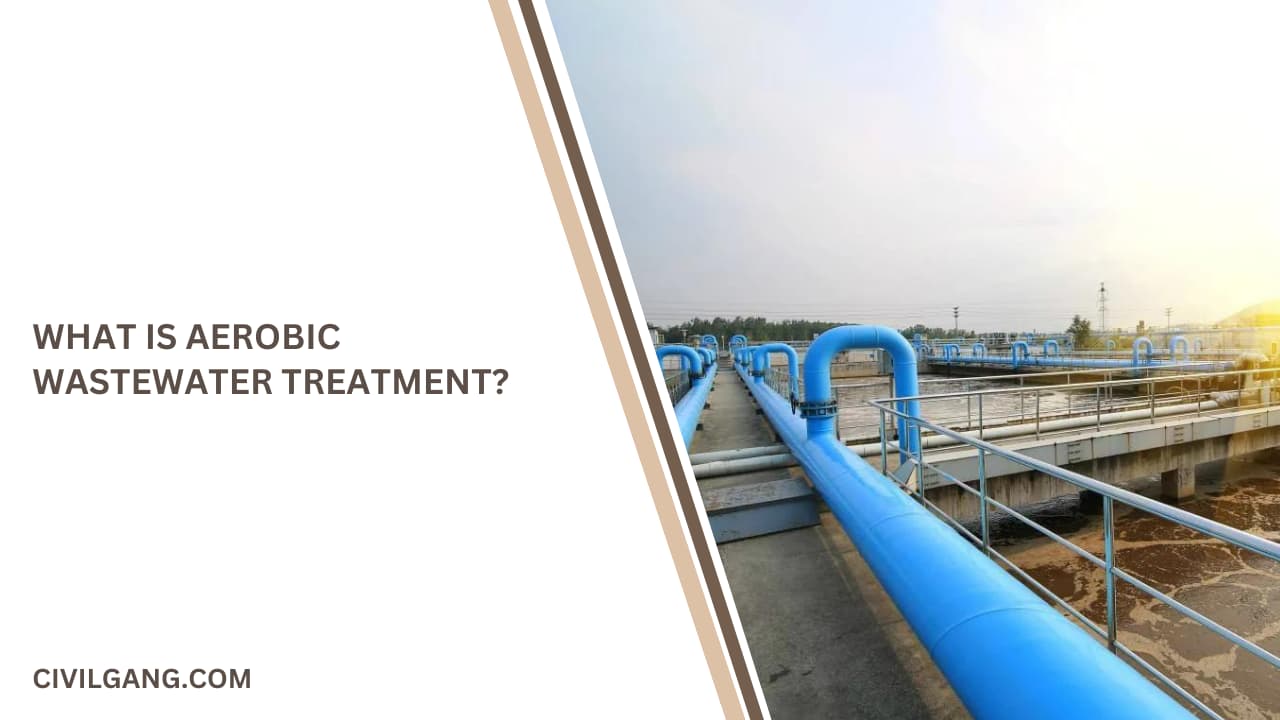
Aerobic wastewater treatment is a biological technique that breaks down organic impurities and other pollutants such as nitrogen and phosphorus with the help of oxygen
A mechanical aeration device, such as an air blower or compressor, adds oxygen to the wastewater or sewage on a constant basis.
Aerobic microbes then consume the organic materials in the wastewater and convert it to carbon dioxide and biomass, which may subsequently be removed.
What Is Aerobic Wastewater Treatment Used For?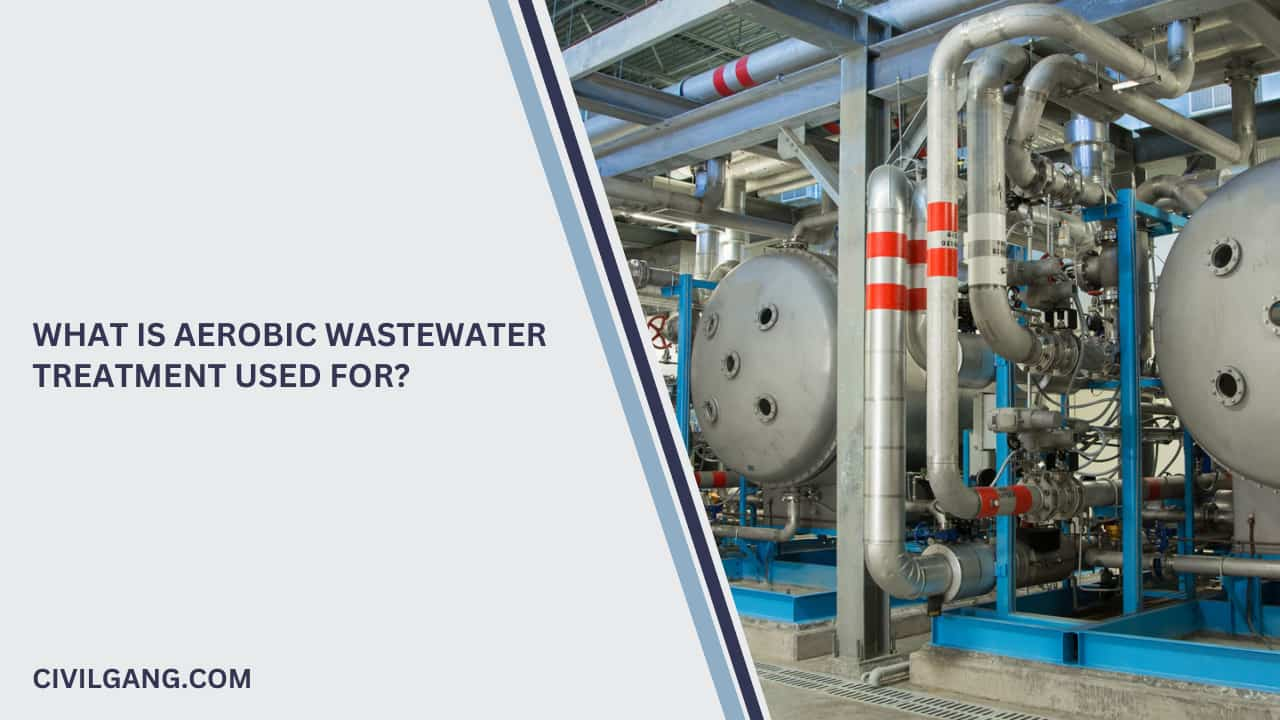
Aerobic treatment is typically used to polish industrial effluent that has already undergone anaerobic treatment.
This ensures that the wastewater has completely deteriorated and may be safely disposed of in accordance with environmental rules.
Aerobic treatment techniques can be used in a variety of industries, including food and beverage, chemical, and municipal.
Aerobic Treatment Unit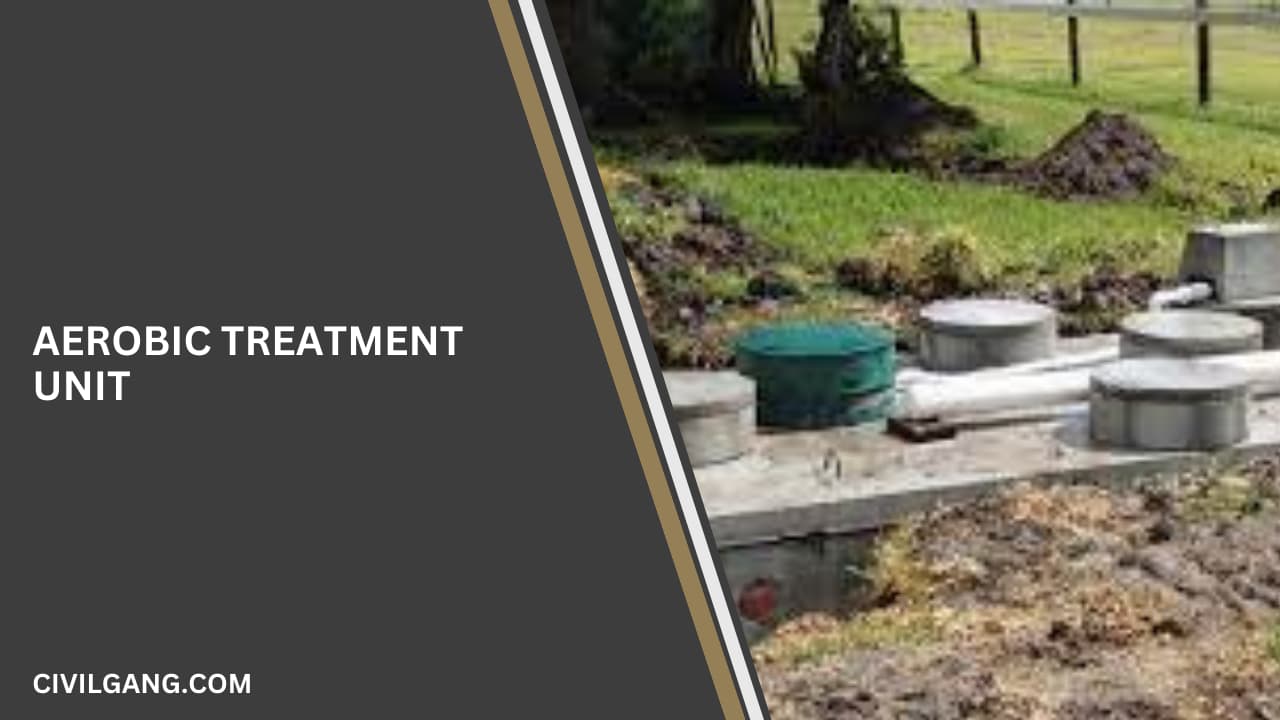
Anaerobic treatment unit (ATU) is made up of various processes that work in tandem to produce high-quality effluent. These include the removal of gross solids (trash), aeration, clarifying, and sludge return.
In most cases, these processes are kept within distinct chambers of a single tank. The wastewater can be routed via an aerobic treatment train using a series of tanks.
ATUs employ biological processes to convert dissolved and solid ingredients into gases, cell mass, and non-biodegradable substances.
The synthesis and separation of microbial cells from treated effluent is a crucial aspect of the biological process.
Diversity of aerobic and facultative bacteria that can degrade a wide range of materials coexist in the treatment process. The creatures dwell in an aerobic environment with plenty of free oxygen for respiration.
ATUs can remove significant levels of BOD5 and TSS that would not be eliminated by simple sedimentation in a traditional septic system.
The biological process also includes ammonia nitrification in wastewater and harmful organism decrease. Nitrification is the aerobic degradation of ammonia (NH3+) to nitrate (NO3-) by microorganisms.
ATUs, which are Class I aerobic systems, treat wastewater sufficiently to be utilised in conjunction with spray systems, which distribute treated wastewater over lawns.
They are the most typical approach to treat wastewater for spray systems when combined with disinfection.
Aerobic Drip Septic System Cost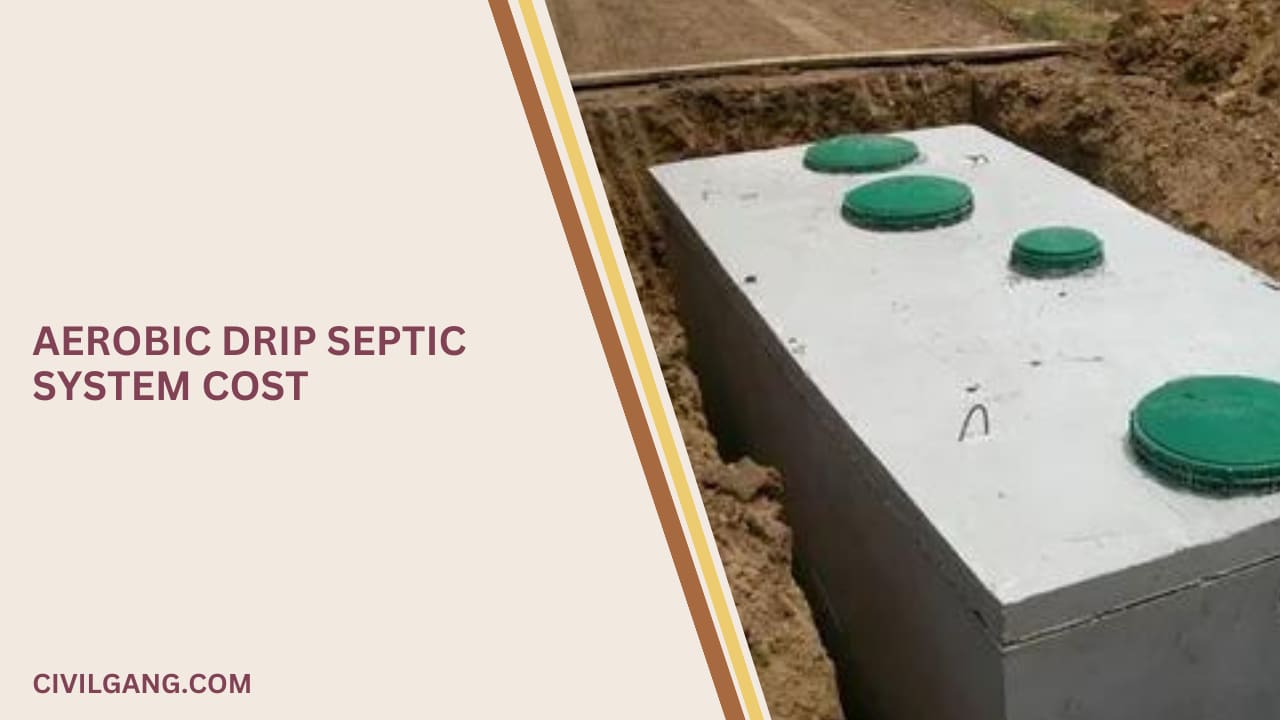
An underground aerobic system costs between $10,000 and $20,000 on average. This is a popular system among homeowners as well. It feeds solid waste to bacteria that require oxygen to live.
As a result, the device injects oxygen into the tank to activate the bacteria. These systems are more expensive to install and operate, but they perform effectively in situations where other systems may struggle.
These systems are used on tiny lots where the soil conditions are inhospitable to other systems and the groundwater table is too high to use other systems. It’s also a fantastic choice if your house is near a body of water.
Aerobic Septic Maintenance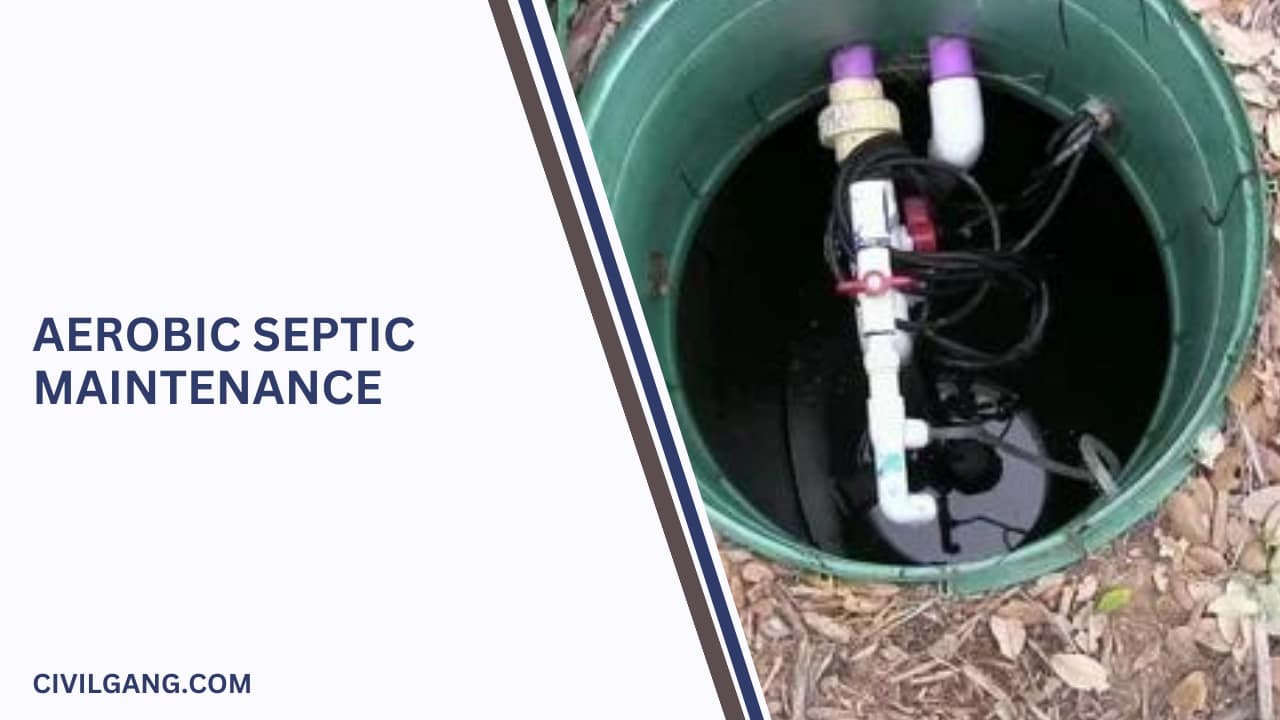
1. Inspect Your Septic System on a Periodical Basis.
- While your aerobic system may be incredibly successful, it may necessitate frequent inspections, septic tank cleaning, and emptying.
- Routine maintenance can help considerably extend the life of your septic system.
- Gravity systems may require cleaning every three years, pressure distribution systems every year, and mound or sand filter systems every year.
2. Whenever Necessary, Pump Out.
- During the septic company’s examination, they may suggest pumping your septic tank.
- The frequency is determined by a number of criteria, including the size of the tanks and the volume of water consumed in the household.
- Pumping is usually required every three to five years for household septic systems.
3. Be Water Conscious.
- It’s possible that you’ll have to limit how much water you use in your home. An excessive amount of water is a common cause of failing aerobic systems.
- Your tank will also fill up faster, necessitating more frequent pumping.
5. Work with Licensed and Certified Companies.
- Certified maintenance specialists should repair or maintain your aerobic system.
- There’s a lot more to septic tank maintenance than just putting chlorine tablets in it.
- Investigate and verify the experience of the maintenance crew that was dispatched to our residence.
6. Solids Should Be Flushed Down the Drains
- Avoid flushing anything down the toilets or drains. Solids and grease flushed down sewage systems may need to be treated and lead to sludge accumulation.
- Domestic wastewater is treated by your aerobic system.
7. Use Harsh Chemicals in Your Bathrooms.
- Chemicals kill the bacteria in your aerobic system that are responsible for breaking down solids.
- The chemicals are also corrosive, causing your drainage pipe to deteriorate.
- Contact your local public health hazard trash line to find out how to properly dispose of the substances.
8. On Your Drainfield or Reserve Area, Park Cars or Trucks.
- Heavy machinery lying on top of your septic tanks might compact the soils, causing the aerobic system to fail.
- You can also keep your pipes from cracking due to the added weight. Planting your flower garden over the sewage tanks is also a bad idea.
- Full tanks may necessitate rapid attention, and you don’t want to risk the septic company damaging your flowers while your house is bursting at the seams with waste.
9. Add Additives to the Septic Tank
- Homeowners frequently experiment with novel septic tank products, some of which are not approved by the local Department of Health.
- The items could be dangerous since they add more solids to the system. Furthermore, the chemicals have the potential to damage ground and surface water.
- This includes the usage of chlorine pills as chlorinators in swimming pools. For treating home wastewater, only calcium hypochlorite tablets have been approved.
10. Never Save Money on Maintenance.
- Homeowners who transfer from a municipal sewer system to an aerobic system may find it difficult to adjust to their new lifestyle.
- The suggestions above might assist you in maintaining your sewer tanks and keeping them in good working order for decades.
Aerobic Septic System Installation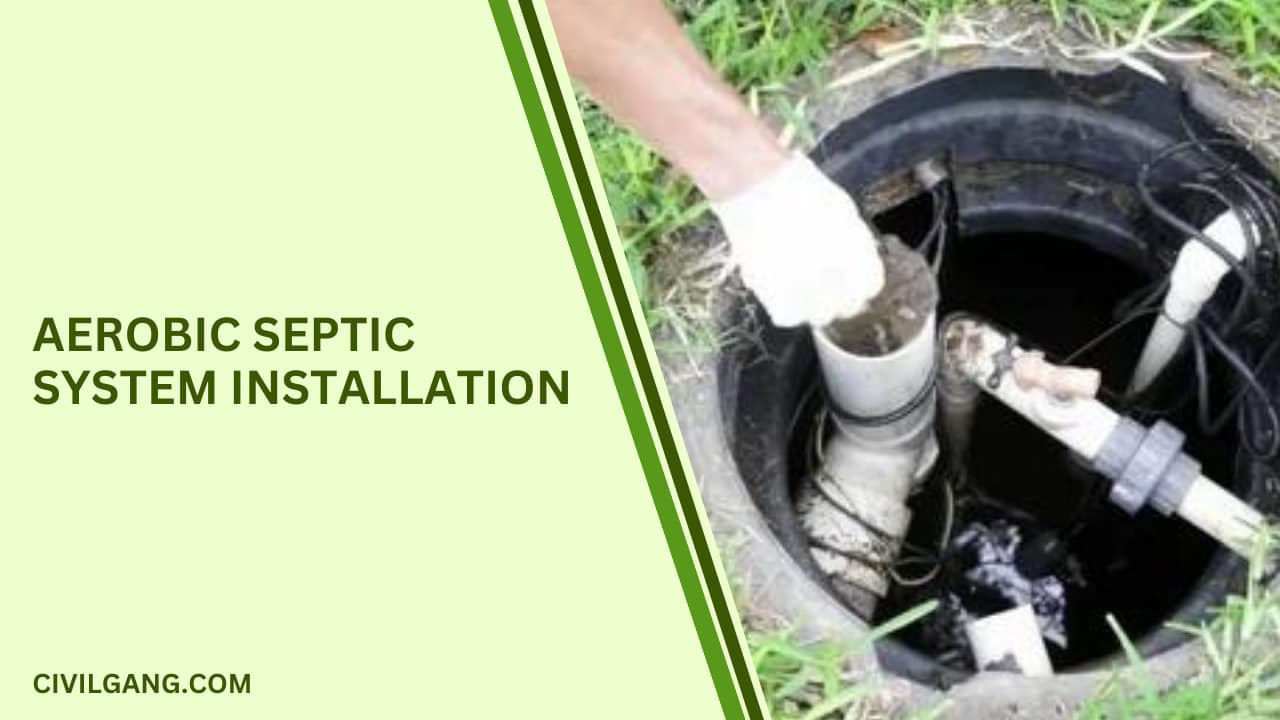
A preconstruction conference, attended by the system’s Authorized Designer, Authorized Installer, and the local administrative authorities, is strongly encouraged before the system’s construction begins.
All aerobic treatment systems must be installed according to the manufacturer’s installation manual and the treatment system design that has been approved by the manufacturer.
Before undertaking any aspect of an installation, all companies/personnel installing the aerobic treatment system must have all relevant permits and licenses.
The aerobic treatment system can only be installed by an Authorized Installer.
In addition to any inspections needed by the local administrative authority, the Authorized Installer must notify the Department at least one week prior to the installation of the aerobic treatment units and arrange inspections with the Department.
During the installation of an aerobic treatment system, an Authorized Installer must be present at all times. No work on an aerobic treatment system should be done without the supervision of an Authorized Installer.
Any septic, processing, or dispersion system dosing tanks mentioned in the design must be waterproof checked after installation using hydrostatic or vacuum testing. The tanks’ top sections, including the riser joints, must be tested.
Testing of Aerobic Septic System Installation
The following rules must be followed while testing:
- The techniques provided in ASTM C-1227 standards or the National Precast Concrete Association suitable testing criteria and procedures must be followed for water tightness testing procedures and criteria for concrete tanks.
- After installation, tanks constructed of materials other than concrete must be tested using the procedures indicated in ASTM C-1227 standards, if applicable, or alternative hydrostatic or vacuum testing methods approved by the tank manufacturer.
- Water for this testing must come from a potable source or an NJPDES permit-authorized Reclaimed Water for Beneficial Reuse.
- It is not advised that you utilize an onsite potable well to furnish water for this testing. If an onsite potable well is to be utilized, it must be pumped at a rate that is less than 50% of the well’s safe yield and does not harm the pump or any other well component.
What Types of Aerobic Wastewater Treatment System Are There?
There are various technologies available for aerobic wastewater and sewage treatment. These are some examples:
1. Conventional Activated Sludge :
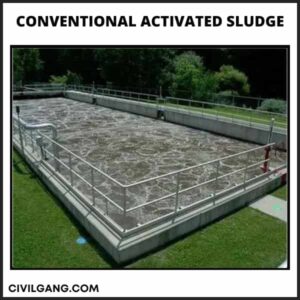
Organic matter is broken down by aerobic microorganisms in an aeration tank in conventional activated sludge.
This results in the formation of biological flocs (sludge), which are separated from the treated water in a sedimentation tank.
2. Moving Bed Biofilm Reactor :
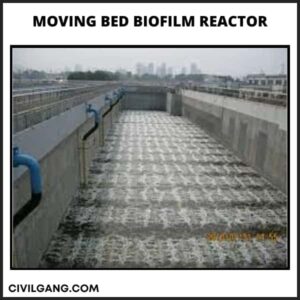
Biofilm grows on plastic carriers suspended and cycled in an aeration tank in a moving bed biofilm reactor (MBBR). Retention sieves keep these in the tank.
3. Membrane Bioreactor (MBR):
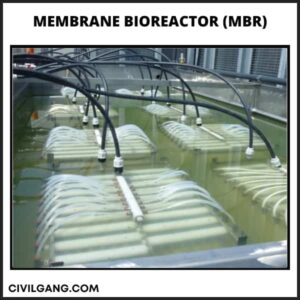
A sophisticated technology that combines the activated sludge process with membrane filtration.
How Can You Get the Most Out of Your Aerobic Wastewater Treatment System?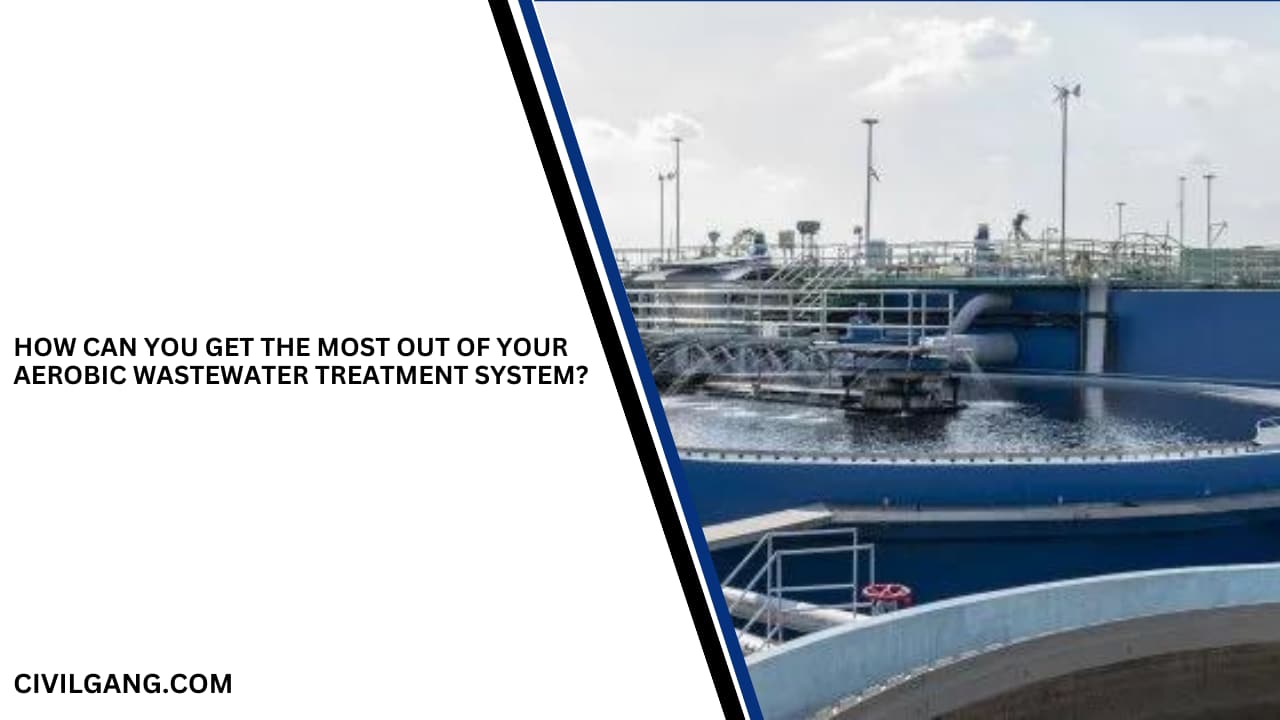
Biological wastewater treatment (anaerobic and aerobic digesting reactors) takes use of some microorganisms’ (including bacteria’s) capacity to absorb organic materials and nutrients dissolved in water for their own development, thereby eliminating soluble components from the water.
As a carbon source, bacteria consume soluble organic materials. Following this procedure, decantation is used to separate the biomass generated from the supernatant.
Nitrogen and phosphorus, as well as organic materials, are required for microorganism growth in the effluent. They must be added to the treatment if their concentration is not sufficient.
Why Do I Need to Maintain My Aerobic Treatment Unit?
The longevity and effectiveness of ATUs are dependent on regular maintenance. Poor maintenance can lead to ATU failure, necessitating costly repairs or replacements at the expense of the homeowner.
You may anticipate a long life and high performance from any onsite sewage system provided it is properly maintained.
Keep in mind that dumping poorly treated wastewater into your yard or ditch might endanger the health of your family. Sewage is full with bacteria, viruses, and parasites that can cause a variety of diseases.
How Do I Properly Maintain My Aerobic Treatment Unit?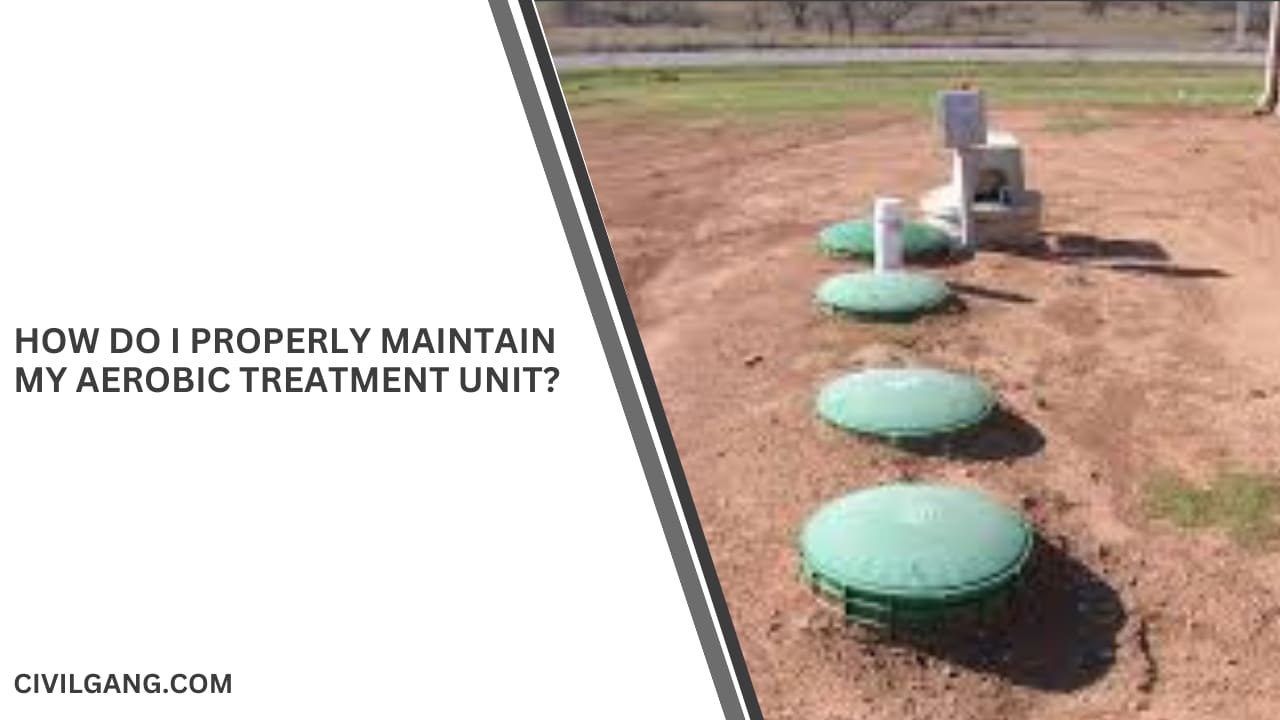
The amount of aeration offered for sewage treatment is one of the most important design requirements for ATUs. As a result, keeping the blower in good working order is critical to the treatment process.
Another concern is the muck that accumulates over time. As a result, the ATU should be pumped on a regular basis to remove any sediments that have settled to the bottom.
The pump schedule is determined by the amount of organic matter entering the ATU. Pumping it every 3 to 5 years is a good rule of thumb.
The first two years of service visits are free with the purchase of any ATU. You should double-check that your maintenance company is doing those visits. Following that, you will be given the opportunity to renew your service agreement.
Frequently Asked Questions
What Is Aerobic and Anaerobic in Wastewater Treatment?
While both rely on a process of microbial decomposition to treat wastewater, the key difference between anaerobic and aerobic treatment is that aerobic systems require oxygen, while anaerobic systems do not. This is a function of the types of microbes used in each type of system.
How Are Aerobic Bacteria Used in Sewage Treatment?
Aerobic bacteria are mostly used in new treatment plants in what is known as an aerated environment. This bacterium uses the free oxygen within the water to degrade the pollutants in the wastewater and then converts it into energy that it can use to grow and reproduce.
How Does Anaerobic Wastewater Treatment Work?
Anaerobic treatment is a biological treatment process in which microbes convert the organic matter in the absence of oxygen. The anaerobic bacteria digest the biodegradable matter present in the wastewater.
How Does an Aerobic Treatment Unit Work?
Aerobic systems treat wastewater using natural processes that require oxygen. Bacteria that thrive in oxygen-rich environments break down and digest the wastewater inside the aerobic treatment unit as they are suspended in the liquid. Like most onsite systems, aerobic systems treat the wastewater in stages.
What Is an Aerobic Sewage Treatment System?
An aerobic treatment system (ATS), often called an aerobic septic system, is a small scale sewage treatment system similar to a septic tank system, but which uses an aerobic process for digestion rather than just the anaerobic process used in septic systems.
What Is the Difference Between Aerobic Treatment Unit Atu and a Septic System?
Aerobic Treatment Units (ATUs) are similar to standard septic systems in that they use natural processes to treat wastewater. But unlike conventional systems, ATUs also use oxygen to break down organic matter, much the same as municipal wastewater treatment systems, but in a scaled-down version.
How Does an ATU System Work?
An Aerobic Treatment Unit, or ATU, is a scaled-down version of a municipal wastewater treatment plant. It converts wastewater into a clear, odourless, reusable resource for distribution onto a garden area, either by above-ground spray irrigation or below-ground drip irrigation.
What Are the Aerobic Treatment of Wastewater?
Aerobic treatment of wastewater is a biological process that uses oxygen to break down organic contaminants and other pollutants like nitrogen and phosphorous. Oxygen is continuously mixed into the wastewater or sewage by a mechanical aeration device, such as an air blower or compressor.
What Are the Uses of Treated Wastewater?
Although treated wastewater is generally of slightly poorer quality than rainwater, it is clear and odourless and well-suited for flushing toilets, for water art and for irrigation. As a rule, it contains a higher proportion of nutrients, which reinforces its suitability for plants.
What Is Aerobic and Anaerobic in Sewage Treatment?
While both rely on a process of microbial decomposition to treat wastewater, the key difference between anaerobic and aerobic treatment is that aerobic systems require oxygen, while anaerobic systems do not. This is a function of the types of microbes used in each type of system.
What Is an Aerobic Drip Septic System?
A drip septic system releases small amounts or “drips” of wastewater at regular intervals, maximizing the treatment of sewage and minimizing the risk of untreated wastewater quickly flowing through the soil.
Aerobic Drip Septic System Cost
An anaerobic septic system has an average cost between $2,000 and $5,000. However, areas with higher labor rates and material costs may see prices rise to between $4,000 and $15,000.
Aerobic Septic System Maintenance
Here, the aerobic system maintenance eight steps are as follows.
- Dos for Aerobic System Maintenance
- Regularly Inspect Your Septic System
- Pump Out Whenever Necessary
- Be Water-Wise
- Use Licensed, Certified Companies
- Don’ts for Aerobic System Maintenance
- Flush Solids Down the Drains
- Pour Harsh Chemicals in Your Toilets
- Park Cars or Trucks on Your Drainfield or Reserve Area
- Add Septic Tank Additives
Aerobic Septic System Repair
Maintenace on aerobic septic system steps are as follows.
- Provide ant and insect control around all system components.
- Keep vegetation around system components, including air compressor, control panel, spray heads etc. under control.
- Clean your air compressor’s filter every 6 months.
- Use tablet septic chlorine, approved for wastewater use.
- Pump out your septic tanks every 3-5 years to remove solids.
Maintenance on Aerobic Septic System
Here, Aerobic system repair steps are as follows.
- Flush solids down the drains: avoid putting just anything down the toilets or the drains. Solids and grease that flush down the septic pipes may require treatment and contribute to the sludge buildup.
- Pour harsh chemicals in your toilets: chemicals destroy the bacteria in your aerobic system that are necessary to break down the solids. The chemicals are also corrosive, eating away your drainage pipe. Find appropriate ways to dispose of the chemicals by contacting your local public health hazard waste line.
- Park cars or trucks on your drainfield or reserve area: heavy machinery resting over your septic tanks can pack down the soils over the aerobic system, leading to system failure. Additionally, you can prevent your pipes from breaking from the extra weight. Additionally, avoid planting your flower garden over the septic tanks.
- Add septic tank additives: homeowners are often trying new products for their septic tank service, some that aren’t approved by the local department of health. The products may be harmful, adding extra solids to the system. Additionally, the chemicals can pollute ground and surface water. This includes the use of swimming pool chlorine tablets as chlorinators.
- Regularly inspect your septic system: while your aerobic system may be highly effective, it may require periodic inspections, septic tank cleaning, and emptying. Routine maintenance can help significantly increase the life service for your septic system.
- Pump out whenever necessary: as the septic company carries out its inspection, they may recommend pumping your septic tank. The frequency depends on several factors, including the size of the tanks, amount of water used in the household, among others.
- Be water-wise: you may need to control water usage within the home. Too much water is a frequent factor in failed aerobic systems.
- Use licensed, certified companies: your aerobic system should be repaired or maintained by certified maintenance providers. There’s a lot more to servicing a septic tank than adding chlorine tablets.
Aerobic Water Treatment System
Aerobic systems are similar to septic systems in that they both use natural processes to treat wastewater. But unlike septic (anaerobic) treatment, the aerobic treatment process requires oxygen. Aerobic treatment units, therefore, use a mechanism to inject and circulate air inside the treatment tank.
Anaerobic Tank Wastewater Treatment
Anaerobic treatment is a proven and energy-efficient method for treating industrial wastewater. It uses anaerobic bacteria (biomass) to convert organic pollutants or COD (chemical oxygen demand) into biogas in an oxygen-free environment.
Aerobic Treatment Unit Septic System
Aerobic systems treat wastewater using natural processes that require oxygen. Bacteria that thrive in oxygen-rich environments break down and digest the wastewater inside the aerobic treatment unit as they are suspended in the liquid. Like most onsite systems, aerobic systems treat the wastewater in stages.
Aerobic Water Sewer
An aerobic treatment system (ATS), often called an aerobic septic system, is a small-scale sewage treatment system similar to a septic tank system, but which uses an aerobic process for digestion rather than just the anaerobic process used in septic systems.
Aerobic Digester Wastewater Treatment
Aerobic digestion is a process in sewage treatment designed to reduce the volume of sewage sludge and make it suitable for subsequent use. More recently, technology has been developed that allows the treatment and reduction of other organic waste, such as food, cardboard, and horticultural waste.
Aerobic System Sprinkler
These bacteria need both oxygen and organic matter to stay alive and make this process work. In an aeration system, the bacteria live either in sludge or in basins. Then a surface aerator or diffusion aerator sends extra oxygen into the system at the same time as organic waste.
Aerobic Digestion Wastewater Treatment
Aerobic digestion is a process in sewage treatment designed to reduce the volume of sewage sludge and make it suitable for subsequent use. More recently, technology has been developed that allows the treatment and reduction of other organic waste, such as food, cardboard, and horticultural waste.
Aerobic Treatment Septic System
An aerobic treatment system (ATS), often called an aerobic septic system, is a small-scale sewage treatment system similar to a septic tank system, but which uses an aerobic process for digestion rather than just the anaerobic process used in septic systems.
Aerobic System Cost
Aerobic systems are much more complicated than anaerobic systems and can cost between $10,000 and $20,000 to install.
Aerobic Treatment Unit Cost
| Sr.No | Aerobic Treatment Unit in Gallon | Aerobic Treatment Unit Cost |
| 1 | 500 Gallon | $713 |
| 2 | 750 Gallon | $1,075 |
| 3 | 1000 Gallon | $1,400 |
| 4 | 1250 Gallon | $1,850 |
| 5 | 1500 Gallon | $2,250 |
Maintaining Aerobic Septic Systems
Aerobic Septic System Maintenance Contract Costs: $175 – $600 per year depending on the level of service for which you contract.
Cost to Install Aerobic Septic System
Aerobic septic systems have an average cost between $10,000 and $20,000, as they are fairly complicated systems. The simpler anaerobic septic system has an average cost between $2,000 and $5,000.
Like this post? Share it with your friends!
Suggested Read –
- Skillion Roof House
- Replace Septic Pump
- Leaking Septic Tank
- Pressure Septic Systems
- Clay Soil Septic Systems
- Signs Septic Tank Is Full
- Wetland Septic Systems
- Septic Tank Pumping Cost
- Septic System Failure Signs
- Old Types of Septic Systems
- Inspection Pipe Septic Tank
- Signs of Water Leak in Ceiling
- Chamber Septic System Cost
- Average Septic Inspection Cost
- How Does a Septic Pump Work
- Plastic or Concrete Septic Tank
- Septic Drain Field Replacement Cost
- How Often Do You Pump a Septic Tank
- All About of Constructed Wetland | What Is Constructed Wetland | Types of Constructed Wetlands | Constructed Wetland Septic System Cost
- What Is a Community Septic System | Community Septic System Cost | Advantages & Disadvantages of Community Septic System
- What Is Chamber Septic System | How Much Does a Chamber Septic System Cost | Chamber Septic System Maintenance
- Alternative Septic Systems | What Are Alternative Septic Systems | Types of Alternative Septic Systems
- Skillion Roof House | Types of Skillion Roof | How to Build Skillion Roof | Advantages & Disadvantages
Leave a Reply